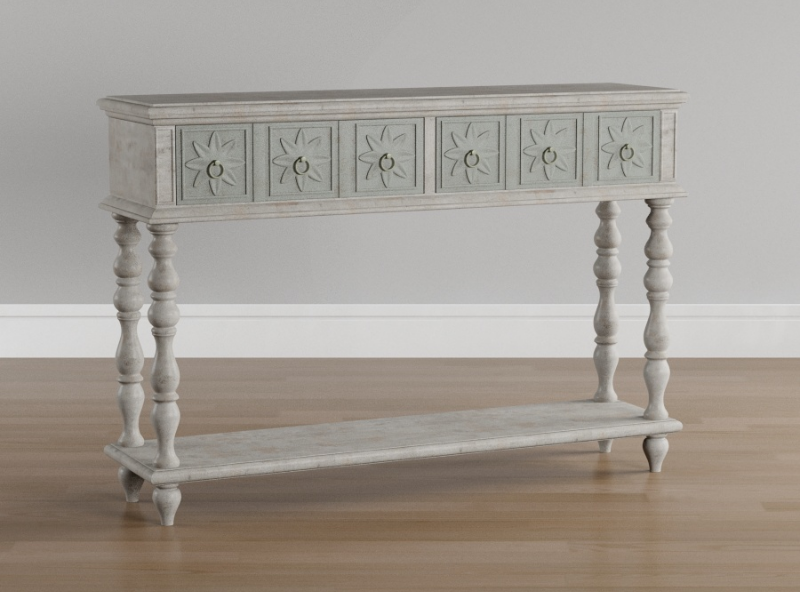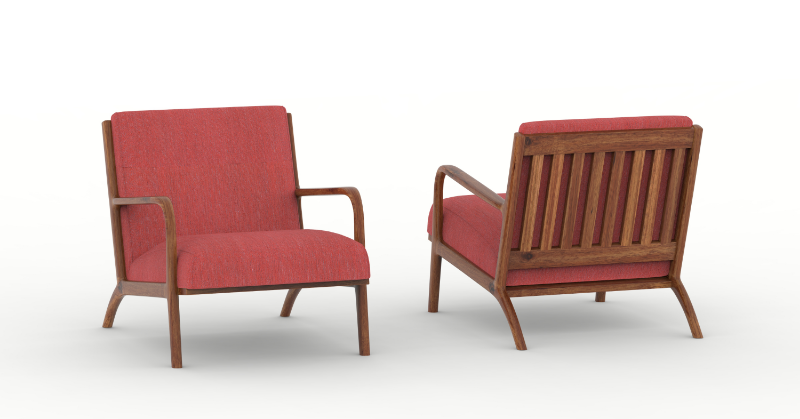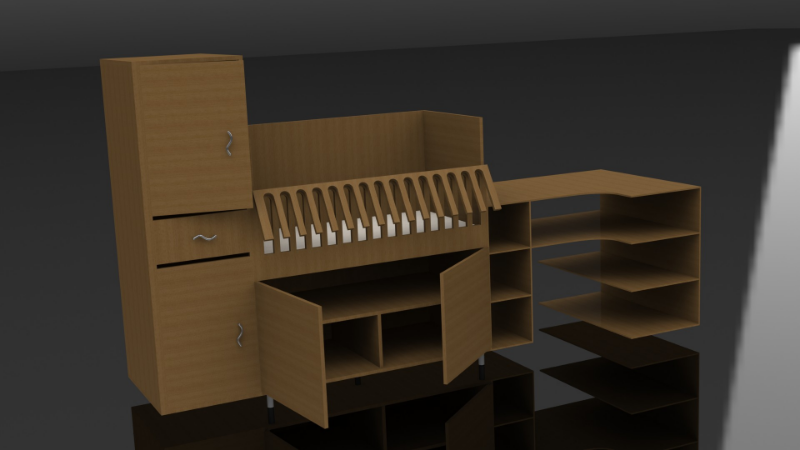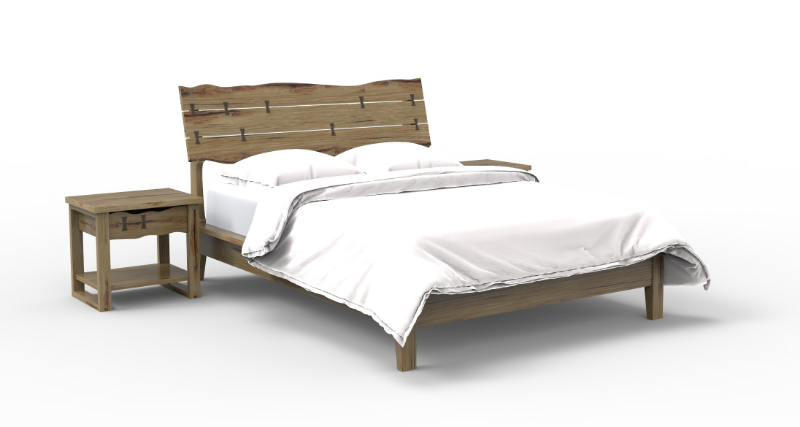Furniture companies and their marketers face major challenges when preparing to promote a new piece. They want people to look at their product and see its advantages, but they don’t want to spend a bundle on promotion. So, how does a marketer use 3D modeling and 3D rendering services to market an idea and stay within a reasonable budget?
What are 3D Modeling and 3D Rendering?
Let’s first talk about the differences between 3D modeling and 3D rendering. 3D modeling and 3D rendering are “two different procedures with totally different workflows.” However, these two procedures “are consecutive stages of the same process.” The first stage is 3D modeling, which is the process of creating a mathematical representation of a three-dimensional object. The mathematical formula creates a virtual object that is viewable from multiple points of view with the same properties as a real object (in this case, a piece of furniture). 3D software creates objects with a very realistic feel.

3D rendering is best described as using automatic computer processing of data to create an image. With 3D rendering, an imported 3D model is enhanced in an image that is created with photoreal effects that include atmosphere, lighting, shadows, and other optical effects.
How Do 3D Modeling and 3D Rendering Apply to Furniture Marketing?
Let’s say a furniture company called Home Chic has just created a hot, new furniture lounge chair model that combines style with extreme comfort, something that should look so inviting that anyone would love to sink into it after a long day of work. The traditional way to represent this piece would be a high-quality photo.
However, this kind of photography does not come cheaply. Home Chic must also consider the cost of promotional materials. The company doesn’t want to use cheaper marketing materials, though, because they could actually submarine sales by failing to do the new piece justice in their representation.
With a traditional marketing strategy, production workers have to first assemble a physical prototype of the new chair. This means the company has to foot the bill for the materials necessary to build the prototype without any promise of a sale. Not only that, the assembled prototypes, along with all the background items needed for the photoshoot, have to be stored somewhere. This could potentially mean additional costs if Home Chic doesn’t have their own warehouse space.
This process will have to be repeated for every new piece of furniture the company wants to promote. Therefore, traditional promotion methods can cause considerable pain to a company’s bottom line.
3D Modeling Is the Solution to This Promotional Money Pit
3D modeling eliminates the need to manually build a prototype for promotional images. The 3D artist only needs to create a digital model to get a set of white background shots that the company can use for promotions. Additionally, the artist can take that one model and apply a wide variety of textures and colors to it for digital prototypes of various models and colors the company wants to promote.
Not only that, 3D software enables the artist to create an interior lifestyle scene as if in a photo studio. 3D modeling creates an image that simulates real objects and scenery without using even one physical piece.

With a highly effective pre-production model, Home Chic has the freedom to start advertising and selling their new product. In fact, the company may even decide to use an on-demand production strategy, enabling them to adapt to evolving customer preferences and produce the exact product the customer wants.
The marketplace of customer preferences can be quite unpredictable. So, rather than mass produce a large number of a piece in one color or material, Home Chic can see what product varieties customers are ordering the most of and produce those without creating varieties no one appears to be interested in. This way, the product launch costs decrease considerably.
Real Life Uses for 3D Modeling
Ikea is a furniture brand name that you would have to know unless you’d just landed on planet earth. Ikea regularly distributes catalogs of their hot home furnishings with stunning images of their merchandise. These images are not photos, but 3D renderings of their furniture.
Ikea boasts more than 9,500 furniture pieces, and since the company has a presence in several countries, all with varying taste in home decor, the need to actually photograph that many pieces to suit a wide variety of preferences could be extremely laborious and expensive.
Instead, Ikea has mastered the fine art of marketing its wares with a modern day technical miracle in the marketing world: 3D rendering.
Ikea has taken the practical step of creating its own offshoot company totally dedicated to visually marketing its high-style home decor. This marketing company places photographers and 3D modeling freelancers in each others’ shoes by having them temporarily swap roles. They then learned all the finer points of each others’ jobs so they could create the best possible marketing images.
There are several advantages to creating 3D furniture images in comparison to standard photo shoots, some of which we’ve already discussed.
Speed
This is especially true of Ikea, which has a strong global presence. The traditional photoshoot is much more labor-intensive and time-consuming than creating realistic images in the digital world.
Flexibility
Photography is beset with limitations in terms of the changes that can be made to images. Although there is some room for photographic enhancement, such as lighting changes and making the color stand out, photos do not permit major changes in texture or style. The use of 3D rendering offers the artist unlimited control, from lighting and new background elements to textures and materials.
Creativity
Models created with 3D design software can take an object and transform basic images into awesomely appealing designs. The choices are countless.
These services are often lumped into a process called Computer-Aided Design (CAD). This includes the process of 3D modeling and 3D rendering.
3D modeling lends itself heavily to continued creativity with exceptional ease. The most important component of this creative ability is amalgamation. This means that distinctive features from a variety of different products are combined into an awesome, new model called modular furniture.
What is Modular Furniture?
Modular furniture has been defined in a variety of ways, but the one that best fits our purposes here is: pieces of furniture built for customization and multi-use.

One example of modular furniture is an object that combines the features of an ottoman with those of a recliner. 3D modelers can create a wide variety of furniture pieces from other pieces such as ottomans, daybeds, sofas, and chairs. The sky’s the limit in terms of the innovation available with 3D modeling.
3D Modeling Cuts Company Inventory Costs
The need for stockroom or warehouse space is significantly reduced if furniture company designs are kept on a computer hard drive because, as the company reviews and responds to consumer trends, it can mix and match designs from the computer and produce pieces as needed.
Not only that, a company won’t have a warehouse filled with outdated designs that have lost their appeal. Thus, the company leadership won’t have to decide how to get rid of older pieces that never left the stockroom. Additionally, whether a company is experiencing a particularly busy season or a leaner one, customers will have an awesome array of furniture design choices without the company needing to actually produce the pieces until there is an actual sale.
Uses of 3D Modeling and 3D Rendering in the Furniture Business
Promotions
Sales divisions can request high-resolution furniture images as they compile product catalogs or design other promotional materials and get a nearly instantaneous response, thanks to the work of 3D modelers and 3D renderers.
3D modeling and 3D rendering lend themselves well to accomplishing quick shots of a particular product. However, such quick work will most likely require some future retouching to enhance product appeal, but that’s easy too. There are often circumstances in which the sales department will want to go beyond the quickie shot and portray a full interior design scene. Developing that scene will, of course, take a little longer, but doing it through digital software still beats the need to set up a physical scene in a photoshoot though.
Interactive Media
Furniture companies need the media’s help for new furniture design launches. Such a launch requires that prospective customers get a clear concept of a product. This is where 3D modeling really comes in handy because 3D models are rotatable and viewers can interact with them through the creation of a virtual reality environment. 3D imaging provides an appealing experience akin to real life, giving customers a taste of what the products could do for their living space.
eCommerce
The majority of society has come to the point that it relies heavily on mobile devices, meaning that, as a result, eCommerce is also making larger and larger tracks in the world economy.
The task of creating shelf appeal on the internet requires that advertisers display the highest quality images for all products they’re selling. 3D modelers seeking to impress discerning clients in the furniture business should demonstrate how they can present any kind of furniture using a variety of perspectives. This includes the ability to present furniture images with features that can be enlarged or with 360-degree rotation to show all aspects of a product.
Test Prototypes
Do you want to test a product idea in the market before actually creating a physical prototype? 3D modeling can give you the freedom to do just that. Then you can post the images created by 3D artists on social media or other platforms to find out if your idea creates a buzz. If it does, then it’s time to produce the real thing and start selling it. Such a strategy can certainly generate a generous return on your investment without wasting materials or effort.
Benefits of 3D Animation for Furniture Sellers
Highly Engaging Web Content
In the brave new internet world, videos rule. Research by HubSpot reports that web traffic consists of approximately 80% videos. Even though Google leads as the foremost web search engine, YouTube, which is known as the world’s most prominent video hosting platform, isn’t far behind, with Facebook following it closely.
Web surfers heavily favor video content because it is eye-catching and requires little effort to watch. In fact, internet users are more likely to memorize videos in comparison to text. The statistics reveal that 43% of web surfers are likely to remember significant portions of videos in comparison to only 18% of those who read text and view still images.

3D animation is comparable to 3D still image renderings because there are no “real-world limitations” in the virtual reality of these two technologies. Because of this, 3D animation can be used for the whole spectrum of marketing channels. These include:
TV advertising: This type of advertising reaches into homes where people may become attracted to a product through a commercial as they wait to get back to whatever television program they’re watching.
Outdoor advertising: While we’re sitting and waiting to meet someone, we may become entranced with a billboard video, possibly out of boredom. We pay attention to the video that has temporarily relieved our boredom and may be inspired to look more deeply into the product we just viewed later.
Social Media Advertising: Tap into the power and popularity of Facebook and YouTube. These platforms may even guide furniture companies regarding which furniture types to focus on because social media viewers have the opportunity to “like” or “share” the videos they view, and that could create some real buzz toward particular styles of furniture.
Trade Show Marketing: The use of 3D product animation portrays furniture in context, which can offer a stronger sense of value in both buyers’ and dealers’ minds. The animation also emphasizes customization options more effectively than a catalog or other printed material can.
Don’t waste your business investment on old-school product development and marketing. As you can see, furniture companies face many challenges in the promotional world, so don’t rely on old, tired ways of marketing your furniture pieces. Tap into the marvelous range of 3D modeling and rendering services that Cad Crowd offers furniture designers.
We can match you with freelance designers that can help you complete your project, no matter how large or small. For more detailed information about our services, visit our How it Works page, or send us some information and get a free quote!
